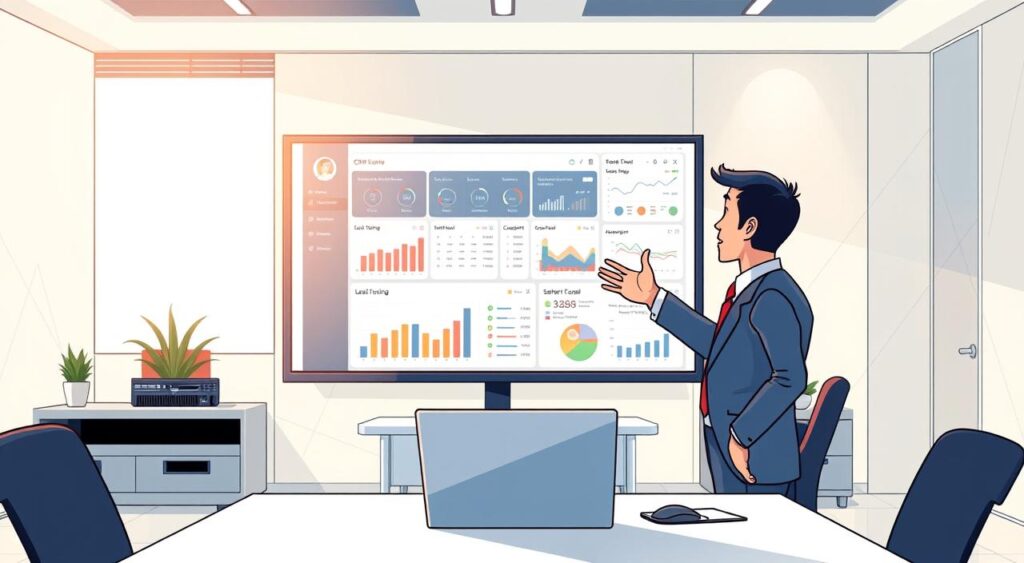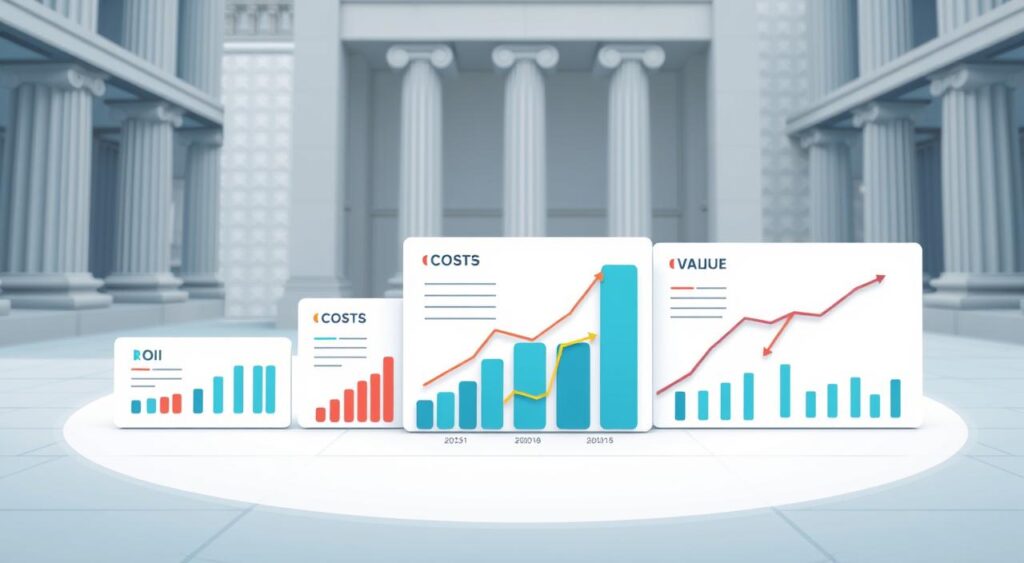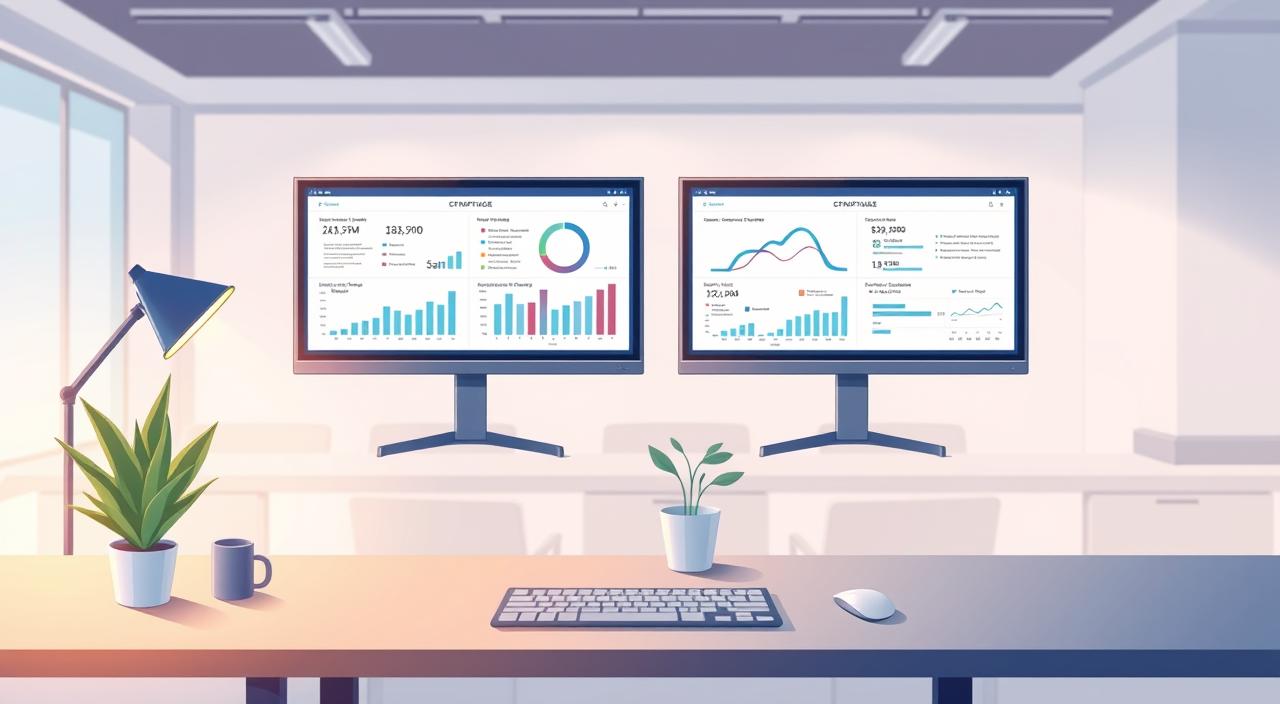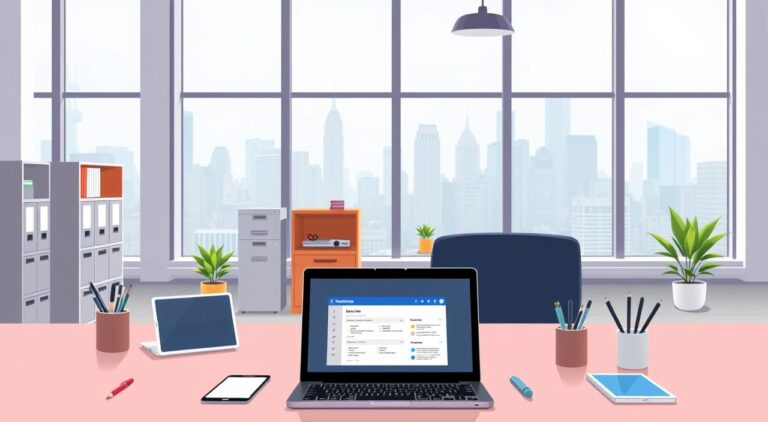US SMBs: ERP vs CRM Comparison for Business Management
Quick answer: ERP vs CRM for SMBs US comparison shows that one centralizes internal operations like finance, HR, inventory, while the other focuses on customer-facing work such as leads, sales, and service. Pick the system that fixes your biggest bottleneck first, then integrate for full value.
Why it matters: Modern erp systems and crm systems share a single data model, embedded analytics, and integration capabilities that reduce silos and speed decisions across teams.
Top vendor names include Microsoft Dynamics 365 Business Central, SAP Business One, NetSuite, Zoho CRM, Freshsales, Pipedrive, and monday.com. Each platform has distinct pricing, modules, and time-to-value.
What this guide does: It lays out a side-by-side look at costs, ROI levers, implementation sequencing, and real-world use cases so U.S. businesses can choose the solution that best improves operations and sales.
Key Takeaways
- ERP manages back-office resources; CRM manages customer journeys to grow revenue.
- Start with the system that fixes your largest process gap, then align data and workflows.
- Both systems reduce manual steps through a centralized data model and analytics.
- Vendors vary by price, modules, and integrations—evaluate time-to-value closely.
- ROI comes from faster cycles, better forecasting, and higher conversion and retention.
At a Glance: Which System Fits Your SMB Right Now
For many small firms, speed-to-value drives choice: one solution typically launches faster and boosts pipeline visibility, while the other steadies finance and inventory.
Fast answer to search intent and key takeaways
- Pick CRM first when your small business needs clearer pipeline, faster follow-ups, and better lead-to-sale coordination.
- Pick ERP first when financial control, inventory accuracy, procurement, or production workflows are the pressing pain.
- Plan phased adoption if both front-office and back-office are strained—integrate later to remove silos and sync customer and product data.
- Time-to-value favors crm systems; they install quicker. Enterprise resource planning efforts need broader discovery and change management.
- Tradeoff: sales momentum vs. operational stability—choose the system that unlocks the biggest revenue or cost savings now.
- Feature snapshot: contact and deal management, forecasting, marketing automation, and service case tracking vs. GL/AP/AR, inventory, supply workflows, and project accounting.
- Data backbone: both rely on a unified model; integration improves quote-to-cash and forecasting accuracy.
- Customers expect timely, accurate answers; connecting systems reduces handoffs and lifts service quality.
- Tools tip: consider established vendors with robust ecosystems to limit risk and speed adoption.
- Management takeaway: sequence initiatives to protect cash flow, minimize downtime, and keep adoption high.
What Is ERP vs What Is CRM for Small Businesses
Deciding which system to deploy starts with mapping daily work: finance and inventory or sales and service.
Enterprise resource planning defined
Enterprise resource planning unifies finance, inventory, HR, procurement, production, and project accounting into one software backbone.
It streamlines internal processes and links budgets, demand, and supply to scheduling and financial outcomes.
Customer relationship management defined
Customer relationship management centralizes contact records, tracks interactions, and manages sales, marketing, and service workflows.
Modern tools add AI-powered predictive analytics to improve lead scoring, forecasting, and retention.
Shared data model and why it matters
Both systems rely on a centralized data architecture so teams see the same customer data, orders, and product details.
That shared data reduces silos, improves reporting consistency, and makes order-to-cash and fulfillment more accurate.
- ERP software: embedded analytics, dashboards, and automation (RPA) to cut manual back-office work.
- CRM system: manages leads, opportunities, quotes, and service tickets across email, web, and social touchpoints.
- Shared objective: align processes so forecasts, capacity planning, and customer interactions use one source of truth.
Core Differences That Matter for SMB Operations
Deciding between a back-office planner and a front-office engagement tool comes down to which team needs immediate relief.
Focus and scope
Resource management and finance workflows center on internal controls, procurement, inventory, and scheduling. These capabilities drive accuracy and lower operating cost.
Customer relationship work targets lead capture, campaign execution, quoting, and support to boost pipeline and repeat business.
- Operations, controllers, HR, and supply planners rely on back-office features to run the company efficiently.
- Sales reps, marketers, SDRs, and service agents use front-office tools to engage buyers and close deals.
“Use the tool that fixes your biggest bottleneck first—then integrate to unlock full value.”
Typical outcomes
Back-office systems emphasize cost control, compliance, throughput, and forecast clarity. Front-office systems focus on higher conversion, predictable sales, and improved retention.
- Overlap: analytics and reporting—but depth favors specialist systems.
- Integration: bridges operations and sales so promises match delivery.
ERP vs CRM for SMBs US comparison
Start by mapping the single biggest daily pain — lost leads or late shipments — then pick the solution that fixes it.
When to choose CRM first: Lead flow, sales pipeline, and marketing automation
Choose a crm system first when lead intake, slow follow-ups, and poor pipeline visibility cost you deals.
Indicators include low conversion, missing touchpoint history, weak attribution for marketing campaigns, and little service visibility.
When to choose ERP first: Inventory, supply chain management, and financial control
Choose an erp system first when inventory management errors, manual purchasing, or delayed billing harm cash flow.
Look for frequent stockouts, overstock, slow financial close, and weak control over procurement and suppliers.
When both are needed: Eliminating silos and aligning front office with back office
Go “both” when demand signals must match capacity. That alignment reduces rework, improves promise dates, and lifts customer relationships.
- Integration priority: sync customer, product, and pricing records to avoid duplicate entries and order errors.
- Early wins: crm lifts sales velocity; erp cuts costs and cycle times—sequence by dominant constraint.
- Management guardrails: define KPIs (win rate, DSO, inventory turns) and share them across sales and operations.
- Roadmap: start lean, standardize processes, then add modules (service, planning) as adoption holds.
“Sequence based on your dominant constraint: fix the biggest blocker first, then integrate to unlock full value.”
Key ERP Features and Benefits for Growing Businesses
When data lives in one place, teams stop reconciling numbers and start making faster, smarter decisions.
A centralized database creates a single source of truth for finance, orders, and operations. This cut in reconciliation saves time and reduces errors.
Embedded analytics and self-service reporting turn raw data into dashboards. Managers get faster insight on cash, demand, and capacity planning.
Automation, RPA, and consistent UI/UX
Automation with RPA removes repetitive tasks like form entry and file moves. Teams focus on higher-value work and close cycles quicker.
Consistent UI/UX across modules lowers training time and standardizes processes. That consistency helps scale operations without chaos.
Supply chain, inventory, and project accounting
Supply workflows link purchasing, receiving, and cost tracking to support on-time fulfillment and margin control.
Inventory features provide real-time status, reorder points, and valuation to reduce stockouts and write-offs.
Project accounting ties budgets, labor, and materials to billing events so profitability is visible by job.
- Single source: unified data for finance and operations.
- Visual insights: dashboards that non-technical users adopt quickly.
- Scalable platform: modular growth paths from vendors like Microsoft Dynamics 365 Business Central and SAP Business One.
Key CRM Features and Benefits That Drive Revenue
A modern crm systems stack ties contacts, pipeline, and automation to clear revenue goals. When touchpoints and activities are organized, reps close faster and leaders forecast with confidence.

Contact management, sales pipeline, and forecasting
Contact and deal management centralize account histories, activities, notes, and docs so reps act with context. Visible pipeline stages show values, probabilities, and next steps. That clarity improves coaching and lifts sales velocity.
Personalized communication and coordinated marketing campaigns
Coordinated marketing campaigns automate email sequences and social touches. Personalization uses real-time data and AI to send relevant messages. The result: higher open rates and better conversion.
Customer satisfaction monitoring and AI-powered insights
Service tracking manages tickets, SLAs, and knowledge articles to speed response. Modern tools add sentiment and omnichannel feedback to track NPS and CSAT in real time.
- AI assistance: assistants like Freshsales’ Freddy summarize records and suggest next actions.
- Integrations: connect calendars, CPQ, and billing to reduce manual entry and keep data consistent.
- Team handoffs: relationship management records flows from SDR to AE to CSM so interactions don’t slip.
Vendors such as Zoho CRM and Pipedrive offer affordable paths that scale as customers and processes grow.
Integration: Why ERP and CRM Are Better Together
Bridging customer records with inventory and billing unlocks measurable gains across teams.
When systems talk, businesses move faster. Unified data removes drift and cuts the manual work that creates errors and delays.
Unified data, fewer silos, and real-time visibility across teams
Unified records align customer data, product, pricing, and availability so sales and operations work from the same truth.
Real-time visibility reduces rekeying and status chases, saving time and improving responsiveness.
Streamlined order-to-cash and accurate inventory-to-promise
Integration shortens cycle times from quote to invoice and makes cash flow more predictable.
Accurate inventory-to-promise delivers realistic commit dates and fewer order exceptions, lowering service friction.
Lower acquisition costs and improved customer experience
Better attribution and segmentation lower acquisition costs and lift campaign ROI.
Cross-functional dashboards connect operations and revenue management on shared KPIs and definitions.
- Standardized workflows reduce errors and create audit trails that support financial control and service quality.
- Connected platform improves relationships through proactive notifications and consistent updates.
- Practical tip: choose solutions with open APIs and proven connectors to speed time-to-value and limit custom work.
“While integration can be complex, the payoff is durable efficiency and scale readiness for growing businesses.”
Implementation Playbook for SMBs
Begin with a short discovery sprint that uncovers data gaps, owners, and quick wins.
Rollout phases and project controls
Follow clear phases: discovery, design, build, test, train, launch, and post-launch. Assign phase owners for finance, inventory, and HR so approvals move fast.
Set a realistic project calendar. Include resource windows and change freezes to protect busy months.
Data readiness and checkpoints
Cleanse, deduplicate, and validate data before migration. Define exit criteria for each phase and align scope, budget, and timeline with leadership.
Adoption, enablement, and metrics
For crm systems, deliver role-based training, tailored dashboards, and an enablement cadence: office hours, playbooks, and quick Q&A sessions.
- Test cross-team flows to validate quote-to-cash and handoffs between operations and revenue.
- Track ERP metrics: cycle time, DSO/DPO, and inventory turns.
- Track CRM metrics: pipeline velocity, conversion, retention, and CSAT.
Plan short stabilization sprints post-launch to capture early wins and fix high-impact issues fast.
Costs, ROI, and Time-to-Value Considerations
CFOs and COOs need a clear map of upfront costs, recurring fees, and the earnings timeline before approving major software spend.

Direct costs include licensing (example: Microsoft Dynamics 365 Business Central from about $70/user/month), implementation services, integrations, and ongoing training.
Indirect costs show up in change management, temporary dips in productivity, and legacy decommissioning. Plan these into cash-flow models.
Licensing, integration, and training trade-offs
CRM tiers (Zoho and similar) usually lower initial spend and shorter time to value. Back-office platforms often require larger implementation budgets but yield stronger control over operations long term.
Integration budgets depend on data complexity and the number of connected systems. Open APIs reduce custom work and shorten delivery time.
Align training investment with role complexity and refresh curricula as processes evolve. This preserves adoption and ROI.
Measuring ROI: cycle times, conversion, retention, and margin
Track a small set of KPIs: quote-to-cash cycle time, close rates, customer retention, and gross margin by product or job.
- Sales impact: better pipeline visibility and forecasting raise win rates and shorten sales time.
- Operations impact: fewer errors and rework cut cost and improve delivery dates.
- Data quality: governance routines sustain accuracy and reporting confidence.
“Model multi-year TCO and set payback targets up front—monitor monthly to keep initiatives on track.”
Practical checklist: estimate total licensing, add integration and training, include indirect change costs, and model revenue uplift and cost reductions to find break-even.
Trusted Vendors and Platforms SMBs Consider
Practical vendor choices balance licensing, partner networks, and modules you actually need.
ERP options to evaluate include Microsoft Dynamics 365 Business Central (starting around $70/user/month), SAP Business One, Oracle NetSuite OneWorld, SYSPRO, Acumatica, Odoo, and Epicor Kinetic.
Each company brings different deployment models and industry focus. Microsoft Dynamics 365 Business Central offers finance, supply, projects, HR, and customer support with accessible licensing aimed at smaller teams.
SAP Business One and NetSuite support scaling and multi-entity needs. SYSPRO, Acumatica, Odoo, and Epicor provide flexible modules and varied hosting choices that suit diverse operations.
CRM options to shortlist
CRM offerings worth considering are Zoho CRM, the Salesforce ecosystem, Freshsales (Freddy AI), Pipedrive, and monday.com.
- Zoho CRM scores on affordability and integrations.
- Salesforce delivers a broad partner network and enterprise-grade extensions.
- Freshsales adds AI-assisted summarization; Pipedrive focuses on pipeline clarity; monday.com strengthens task and dashboard management.
Decision tips: match tools to required features, current stack, and IT capacity. Assess partner ecosystems, certified support models, and ask for references from similar businesses in the United States.
“Request references and validate implementation outcomes with peers in your industry before making a commitment.”
Common Mistakes to Avoid When Choosing ERP or CRM
Choosing the wrong software path can add months of delay and thousands in waste—avoid common traps early.
Be practical: don’t buy a heavy back-office suite with modules you won’t use. Start with essentials and expand as needs grow.
- Don’t skip a crm system: spreadsheets lose leads and create inconsistent follow-ups. Implement simple contact and pipeline tools first.
- Avoid siloed tools: disconnected sales, operations, and finance cause duplicate data and errors. Prioritize integrations that share master records.
- Pick scalable software: niche platforms may force a painful re-platform later. Choose tools with clear growth paths.
- Use AI features: modern automation saves time on scheduling, reminders, and follow-ups—don’t ignore them.
- Involve end users: missing input leads to low adoption and wasted management effort.
- Plan data cleanup: underestimated cleansing delays go-lives and weaken reporting control.
“Define management KPIs up front and keep customer feedback loops active to capture continuous improvement.”
Final tip: map supply chain and chain management impacts early. That prevents fulfillment surprises and keeps customers satisfied.
Conclusion
Decide by the pain that slows your team most: sales gaps or operational friction. Pick the system that delivers fast wins, then plan phased integration so metrics and processes align across the company.
Customer relationship management improves pipeline health, communication, and forecasting. Aligned systems, clean data, and role-based dashboards turn features and tasks into reliable interactions that lift customer relationships and marketing ROI.
Over time, integrated solutions boost service, inventory accuracy, supply chain management, resource planning, and project visibility. Define success metrics, prioritize near-term initiatives, and choose software and partners with proven outcomes to speed time-to-value and keep control as your business grows.






